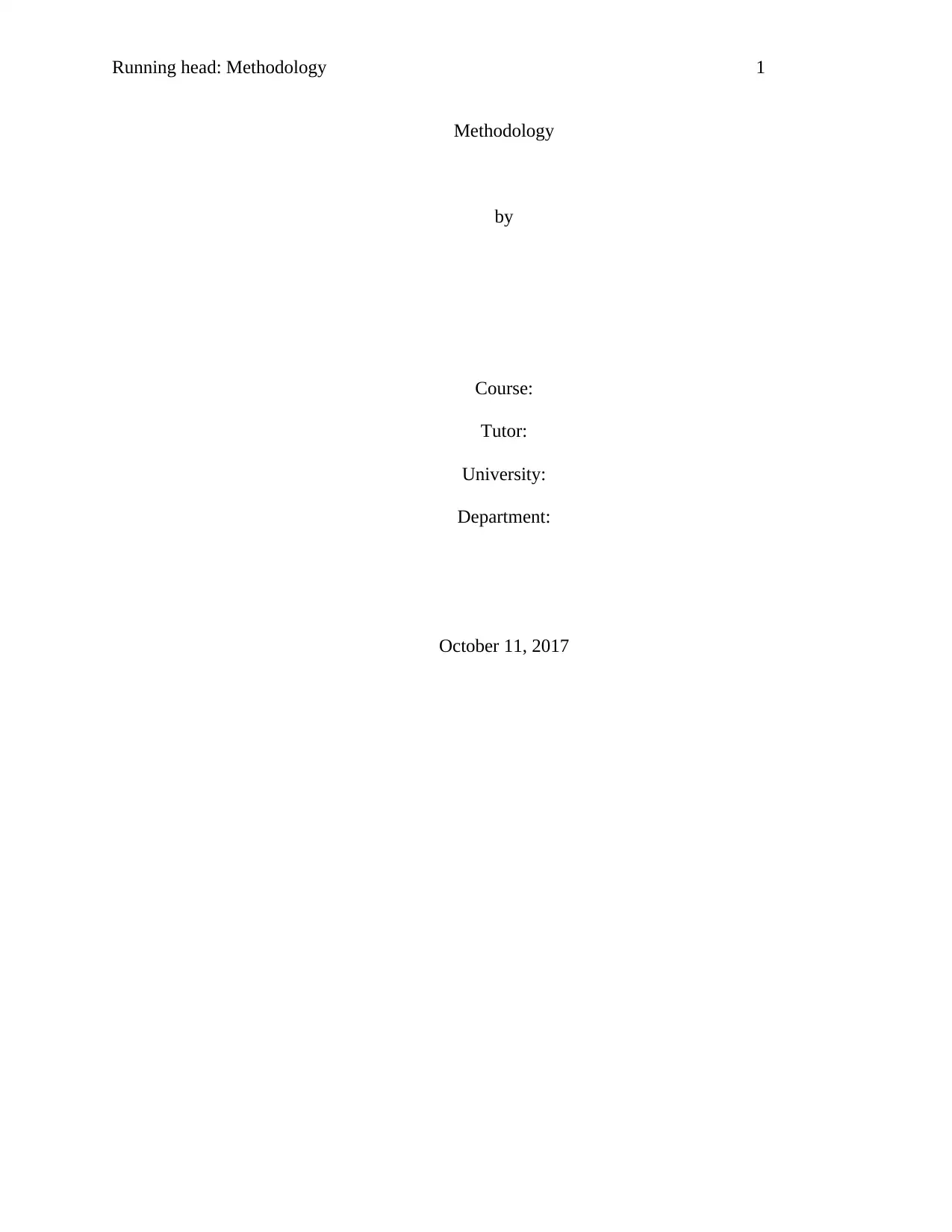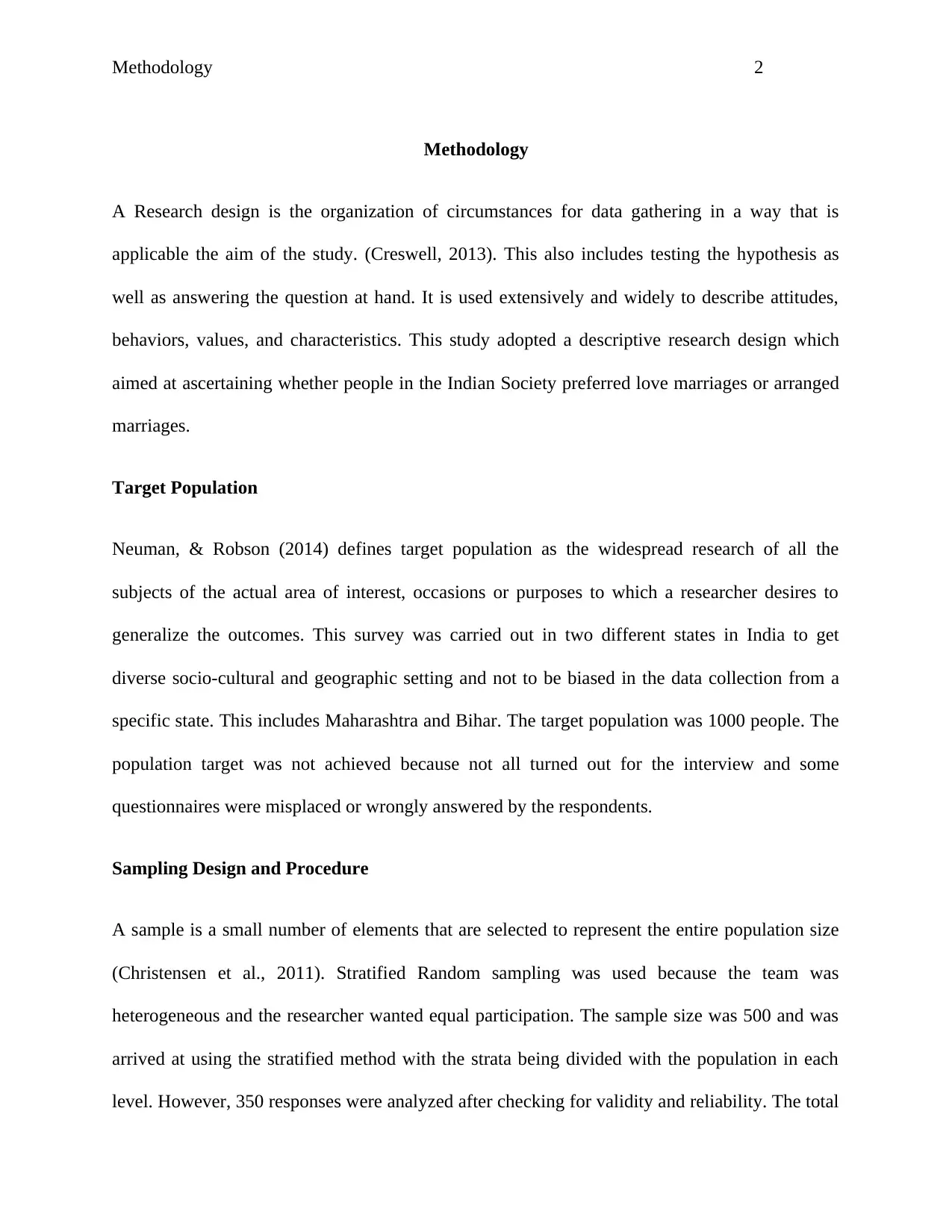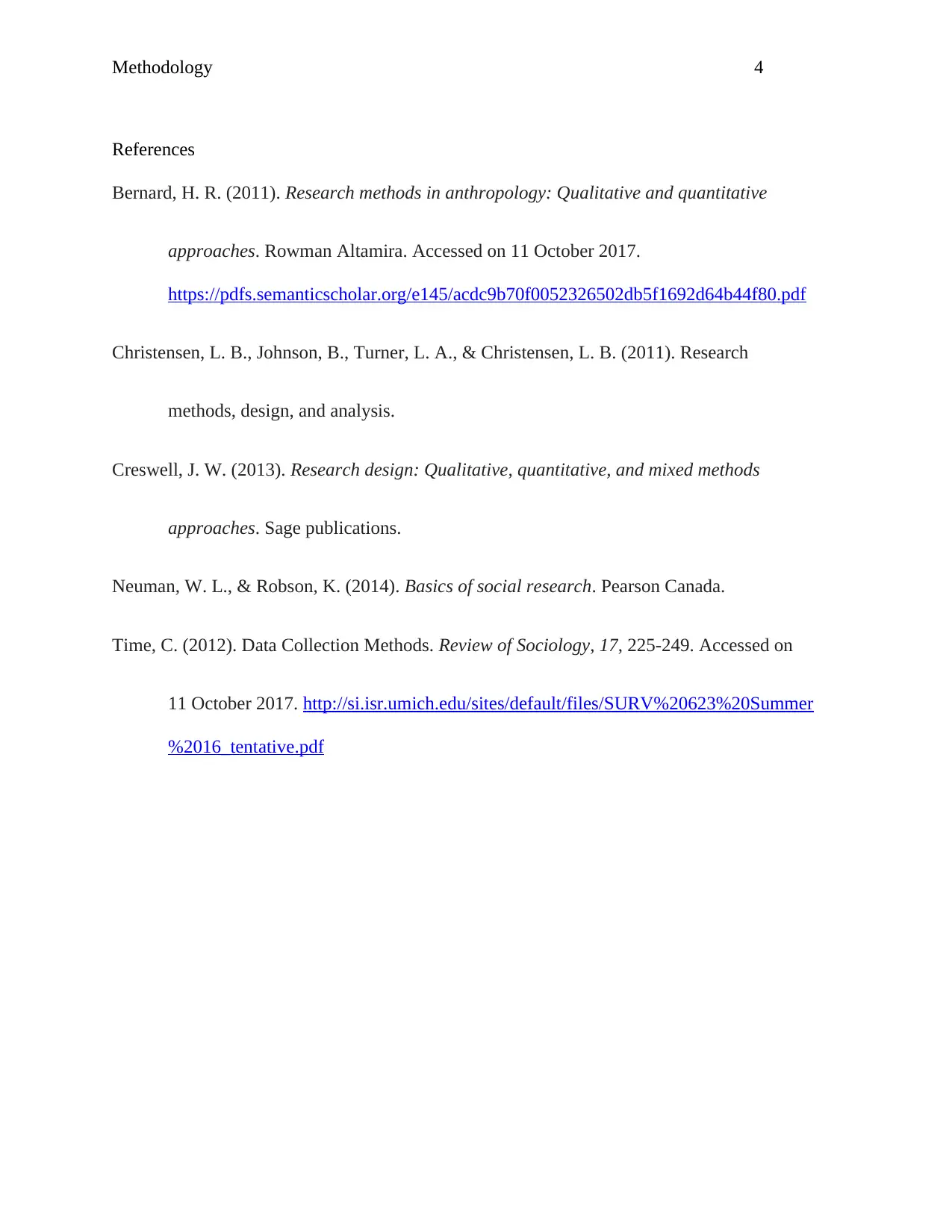Sociology Report on Methodology: Indian Marriage Preference Study 2017
VerifiedAdded on 2020/05/11
|4
|666
|88
Report
AI Summary
This report details the methodology employed in a study investigating marriage preferences in India. The research utilized a descriptive research design to determine whether individuals in Indian society favored love marriages or arranged marriages. The study targeted a population of 1000 people across two Indian states, Maharashtra and Bihar, aiming for diverse socio-cultural representation. A stratified random sampling technique was implemented, resulting in a sample size of 350 respondents after data validation. Data collection involved both primary and secondary sources, including semi-structured questionnaires and interviews. Quantitative data analysis was performed using SPSS, with results presented through bar charts, pie charts, graphs, and frequency distribution tables. The report provides a comprehensive overview of the research process, from design to analysis, offering insights into the study's approach to understanding marriage preferences.
1 out of 4











![[object Object]](/_next/static/media/star-bottom.7253800d.svg)